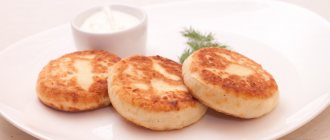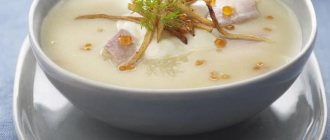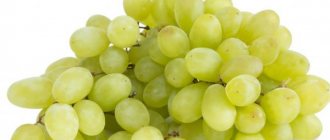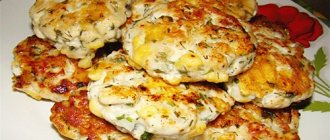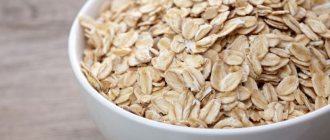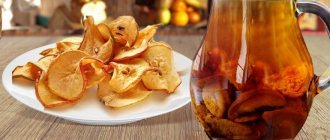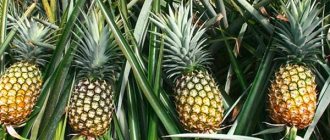Calorie content of fresh raspberries
Fresh raspberries are a low-calorie product. Its calorie content per 100 grams varies from 47 to 55 kcal, depending on the variety and degree of ripeness of the berries. Therefore, nutritionists often advise using it when creating their menu for those who want to lose excess weight or are trying to keep it the same.
Carbohydrates in raspberries are represented by sucrose, glucose and fructose. Californian scientists have proven that fructose is more dangerous for your figure than glucose and sucrose. Therefore, those who are watching their weight should avoid berries and fruits high in fructose. Raspberries contain approximately the same amount of glucose and fructose - about 3.9 g per 100 g of pulp. There is about 0.5 g of sucrose per 100 g of product. These are not high figures. For comparison, grapes, which are considered an undesirable food for weight loss diets, contain 7.8 g of fructose and 7.7 g of glucose. A pear contains about 6.5 g of fructose, and a persimmon contains about 5.5 g.
Important! The process of digesting fructose is more difficult for the body than sucrose and glucose, so it can be stored in fat if it is consumed in excess. In addition, fructose increases appetite, which often leads to overeating.
Assessing the amount of fructose contained in raspberries, the berries can be considered safe for the figure. Especially when you compare them with bananas, grapes and persimmons - fruits that nutritionists call the “enemies of slimness.”
The calorie content of fresh raspberries depends on the plant variety and the place where it grows. It is believed that red garden raspberries, which are grown in sunny summer cottages, are sweeter than the wild variety. Wild raspberries, growing in shady areas, do not have such a sweet taste, but are more aromatic.
Yellow raspberries have an even sweeter taste. It contains not only less anthocyanins, which determine the color of fruits, but also less organic acids. But it contains more sugars. The taste of yellow raspberries is softer and richer. The calorie content of ripe berries is 49 – 50 kcal per 100 g.
But black raspberries are considered the sweetest. This variety was bred in North America, so plants with black berries are less common in vegetable gardens and front gardens in our area, but they are gradually gaining popularity among Russian gardeners. The taste of black raspberries is higher than that of red and yellow ones. Its taste is sweeter, honey. The calorie content of black berries reaches the highest level - 55 kcal per 100 g.
Note: unlike red and yellow berries, black ones are denser, they do not fall off the bush when ripe, do not wrinkle and are stored longer after picking.
BJU
Fresh raspberries are a source of carbohydrates for the body. There is very little protein and fat in it. 100 g of fruit contains:
- 8.3 g carbohydrates;
- 0.8 g proteins;
- 0.5 g fat.
Thanks to the carbohydrates contained in the fruit, raspberries fill you well and ensure a long-term lack of hunger.
The benefits of raspberries for weight loss
The fruits of the plant have special properties that allow you to lose weight quickly and without “suffering”:
- Removes excess fluid from the body. Acts as a mild diuretic. Also recommended for swelling.
- Contains a large amount of fiber. Due to this, it normalizes intestinal motility and stool, relieving constipation.
- Improves the course of metabolic processes. The pulp of the fruit contains special substances - ketones, which in their effect on the body resemble adrenaline. To stimulate the speed of metabolic processes, it is enough to consume 100 grams of raspberries daily.
- Contains lipolytic enzymes. Simply put, fat burners. If you are overweight, it is advisable to eat ½ cup of raspberries 30 minutes before meals.
The fruits of the plant have a sweet taste. The body, which requires dessert in the form of “fast” carbohydrates, responds well to natural sugars. Therefore, nutritionists, in order to satisfy the need for sweets, add the product to cereals, cottage cheese, put it in a milkshake, and replace candy with it during tea drinking.
The effect of raspberries on the figure
Considering the calorie content per 100 grams of berries, raspberries can be considered a dietary product. And if you take into account the amount of vitamins and microelements that have a beneficial effect on metabolism in the body, it can even be called a product that promotes weight loss.
But this does not mean that you can eat it in unlimited quantities. Moderation is important in everything. For an adult, the daily norm is considered to be 70–100 g of berries; for children, a portion weighing up to 50 g will be sufficient.
Important! The benefits and harms of raspberries for your figure primarily depend on the number of berries eaten. Even low-calorie berries can cause weight gain if you eat too much of them.
Raspberry diets
There are many variations of raspberry diets that promise quick results. These are both so-called express diets and mono-diets. The first are based on a sharp reduction in calories due to the introduction of raspberries and other low-calorie foods into the diet. Such diets allow you to lose up to 3 kg of weight in 2 – 3 days.
Mono-diets have even more stringent restrictions. When following the raspberry mono-diet, you are allowed to consume only one product - raspberries. You can drink water, green tea. As a rule, the duration of a mono-diet does not exceed 3 days. During this period you can lose up to 5 kg.
If express diets, the diet of which has a reduced caloric intake, are considered ineffective, and when returning to the usual diet, the weight returns “boomerang”, then mono-diets are considered completely dangerous to health. Excluding protein foods and fats from the diet is stressful for the body. The menu should be balanced. If a mono-diet lasts more than 3 days, there is a high probability of harming your body.
In order for weight to decrease without the body feeling a lack of micronutrients, the diet must be composed in such a way that it contains proteins, fats, and carbohydrates. To lose weight, it is enough to create a small calorie deficit. To do this, you should eat raspberries at one of your meals, for example, lunch, or replace with them the sweets that were present in the diet before the diet.
A sample weight loss menu might look like this:
- breakfast: omelet with cheese and herbs, a slice of bread with butter;
- snack: raspberries with milk;
- lunch: soup with meatballs and rice;
- dinner: fish baked with vegetables.
Benefits and harm to the body
The properties of processed fruits can be equated to fresh ones, given the almost unchanged composition of nutrients. But it is better to study how much benefit and harm this raspberry can cause before taking it.
- Product benefits:
- Frozen raspberries are used to prevent sclerosis.
- Positively affects the cardiovascular system.
- Recommended for atherosclerosis and hypertension.
- Serve as a plant antibiotic.
- Removes toxins and cholesterol from the body.
- Used for arthritis and arthrosis.
- Increases immunity.
- Strengthens the human nervous system.
- It has an antipyretic effect and is used in the form of tinctures for colds.
Important! After taking raspberry-based decoctions and tinctures, you should definitely go to bed and take cover. This will help the body better fight the disease.
- Possible harm:
- Berries should not be consumed if you have gout symptoms. Due to the presence of purine in the composition, abuse of the product can cause a malfunction in purine metabolism.
- If a person is prone to allergies, red dessert can cause undesirable reactions (rash, redness, dizziness).
- Raspberries cause uterine contractions, so it is better for late pregnant women to refrain from consuming them.
Calorie content of dried raspberries
Deprived of moisture, freeze-dried raspberries are often used in cooking. It is added to baked goods, desserts, cereals, dairy products, and compotes and jelly are made from it. It has a rich raspberry flavor and is even sweeter than a fresh berry.
But more often, dried raspberries are used for medicinal purposes. Decoctions and infusions are prepared from it, tea is brewed, using its healing properties to fight colds, strengthen the immune system, improve heart function and the condition of blood vessels.
During drying, the berries lose about 90% of their moisture, so dried raspberries have a higher calorie content than fresh fruits. 100 g of dried berries contains about 240 kcal. If raspberries are not just dried, but pre-boiled in sugar syrup, the calorie content of the berry can increase by one and a half to two times.
If the drying conditions are met, many beneficial substances are retained in the berries, so freeze-dried raspberries are not only tasty, but also a healthy product . It is rich in vitamins C, A, E, it has a lot of potassium, magnesium, salicylic acid, and fiber.
What are the benefits of raspberry leaves?
The leaves of the plant are famous for their medicinal properties due to the content of beneficial components. Research helped establish the composition of the leaves:
- Ascorbic acid;
- Organic acids;
- Astringents and tannins;
- Mineral salts;
- Flavonoids;
- Salicylates.
There are medicines created on the basis of raspberry leaves. They help treat colds, inflammation of the throat and bronchi. The leaves contain flavonoids - substances that can stop bleeding.
They help treat:
- Colitis;
- Stomach bleeding;
- Haemorrhoids;
- Enterocolitis.
A healing decoction of raspberry leaves can relieve inflammation. The resulting solution treats gum inflammation, stomatitis and diseases of the female part.
Frozen berry
The easiest way to preserve raspberries in the autumn-winter period is freezing. Frozen berries, thanks to the “shock freezing” technology, retain most of the beneficial properties and taste of fresh raspberries. Freshly frozen raspberries can be consumed as an independent product or added to various dishes and drinks, for example, you can prepare a cottage cheese casserole with berries or make raspberry compote.
The calorie content of frozen berries is 40 - 45 kcal. As is the case with fresh berries, the calorie content of frozen raspberries depends on the degree of ripeness and the type of product used for preparation. The sweeter the fresh berry, the higher the calorie content of frozen raspberries.
Most often, one of 2 methods of freezing raspberries is used:
- freezing whole berries: spread the raspberries in an even layer on a flat surface and put them in the freezer;
- freezing raspberries pureed with sugar: the berries are combined with granulated sugar and ground with a wooden masher, after which the puree is laid out in plastic or glass containers and placed in the freezer.
Depending on how many ingredients were used for the preparation, raspberries frozen with sugar can have a calorie content several times higher than berries frozen without sugar.
For example, if 100 g of granulated sugar was added to 300 g of berries, frozen raspberries will have a calorie content of about 135 kcal per 100 g of product. This recipe uses a 3:1 ratio. If more sugar is added, the calorie content of frozen raspberries will be even higher.
Without sugar, as a rule, whole berries are frozen. If raspberries are pureed, it is advisable to add granulated sugar to it, so that in the future the puree will be more convenient to use as a filling for pies, a component of desserts and creams.
How to dry raspberries
As you understand, the best way to prepare raspberries in order to preserve all their healing properties is by drying and freezing. I wrote about how to properly freeze berries here.
Now let's look at how to properly dry berries.
Raspberries are harvested in dry weather when they are fully ripe.
They can be dried in the sun, scattered in a thin layer, or in fruit and vegetable dryers at a temperature of 30-35 C.
Raspberries with sour cream
We are used to raspberry jam, raspberry syrup and fresh berries. Well, some also cook raspberry jelly, make smoothies and various cocktails.
And I love raspberries with sour cream. And although I practically do not eat dairy products, I am ready to eat these dishes all the time.
This dish is quite simple to prepare.
Can raspberries be harmful?
Raspberries, like any other plant product, may have their contraindications for use.
It should not be used during periods of exacerbation of any diseases of the kidneys, gastrointestinal tract, when taking medications against blood clotting, and for those who are prone to allergic reactions.
Do you like raspberries?
Share your knowledge about this amazing berry and supplement this article with your useful information.
You may also be interested in these posts about healthy fruits:
- Useful properties of persimmon
- Useful properties of tangerines
- Useful properties of kiwi
- Useful properties of watermelon
- What are the benefits of plums?
- What are the benefits of blackberries?
Alena Yasneva was with you, have a juicy day and see you!
Photo @JillWellington/https://pixabay.com/
Raspberry jam and marmalade
The salicylic acid contained in raspberries makes raspberry jam a well-known folk remedy for colds. But those who prefer to be treated with traditional methods and are simply big fans of homemade preparations should know that the calorie content of raspberry jam is much higher than that of fresh berries. Of course, a spoonful of jam won’t do much harm to your figure, but if you eat it in large quantities, you can quickly notice unpleasant changes in the mirror.
How many calories are in raspberry jam is influenced by the recipe according to which it was prepared. The most popular recipe among housewives uses a 1:1 ratio, that is, 1 kg of granulated sugar is taken for 1 kg of berries. The berries, ground with sugar, are boiled, placed in jars and rolled up. The calorie content of raspberry jam prepared according to this recipe is about 220 kcal per 100 g of delicacy.
If raspberries and sugar are added in other proportions, the calorie content of the product will change. In different recipes it can vary from 200 to 350 kcal per 100 g. The calorie content of a spoonful of jam can be from 10 to 20 kcal.
In addition to traditional raspberry jam, raspberry jam is considered a popular homemade preparation for the winter. Its preparation differs from jam in that the berries are pre-chopped, so the texture of the product is more uniform and viscous. Depending on the quantity of raspberries and sugar added to the jam, its calorie content can range from 200 to 300 kcal. Accordingly, the calorie content of a teaspoon of jam will be from 10 to 15 kcal.
Another well-known recipe for preparing raspberries for the winter is the so-called “raw jam”. From “raw jam” you can prepare raspberry tea during the cold season, which has diaphoretic properties, strengthens the immune system and speeds up recovery.
The difference in its recipe is that the berries, ground with sugar, are not boiled, but in their raw form are placed in jars and stored in the refrigerator. The benefits of this delicacy are much greater than those of a traditional preparation, but the calories are the same.
Recipes for dietary dishes with raspberries
You can and should eat raspberries without harming your figure. But sweet jams and preserves are not suitable for this purpose. You know how many calories are in raspberries with sugar! To benefit from your health and figure, use our dietary recipes.
Raspberry ice cream
Delicious and healthy ice cream can be made without sugar or fat. All you need is 2 ingredients – raspberries and banana. The banana is peeled and broken into several small pieces. Raspberries can be used either fresh or frozen. The calorie content of frozen raspberries differs slightly from fresh fruits to a lesser extent, but not significantly, which does not greatly affect the total number of calories in the dessert.
Bananas and raspberries are placed in the freezer for 3 - 4 hours, until completely frozen. Then the frozen banana is pureed using a blender. Frozen fruit produces a puree that is soft in consistency and tastes like ice cream. Then raspberries are added to it and the whole mass is thoroughly crushed again with a blender. Ice cream can be topped with a teaspoon of raspberry syrup or decorated with chocolate shavings.
Raspberry trifle
Trifle is a dessert served in a glass. There are many recipes for trifles. During the season of fresh raspberries, you should definitely prepare a curd-raspberry trifle. For it you will need:
- for cream: soft low-fat cottage cheese (120 g), sweetener, vanillin;
- for the layer: 50 g fresh raspberries;
- for the crust: 1 egg, 20 g of rice flour, a pinch of salt, sweetener, baking powder, 2 teaspoons of low-fat sour cream.
The ingredients for the dough must be mixed thoroughly. A cupcake is baked from it in the microwave or oven. Soft cottage cheese is mixed with sweetener and vanillin. After cooling, the cake is cut into small cubes, take a glass and put the ingredients into it in layers: curd cream, sponge cake, berries, again cream, sponge cake and berries on top.
Note: if you don’t have fresh raspberries, you can replace them with ice cream. But the berries lose their shape after defrosting, so it’s better to mix them with curd cream. The calorie content of frozen raspberries is almost the same as that of fresh berries, so the replacement will not affect the healthfulness of the dessert for your figure.
Application
During the fruiting season, raspberries are eaten fresh, they are used to make compote, jelly, syrup, jelly, marmalade, marshmallow, wine, fruit juice, liqueur, filling for pies, and added to desserts, fruit salads and dairy products. Raspberries are frozen, dried, ground with sugar and prepared for the winter in the form of jam, jam, jam. Raspberries do not lose their medicinal properties after heat treatment, so raspberry jam is considered the best remedy for colds.
Market Analytics
- Global cosmetics market 2021: an unprecedented test for the global cosmetics industry
- Top 10 Cosmetic Research and Development of 2021
- 2020 in the beauty industry – innovation without borders
Convenient search for beauty salons on our website
Beauty salons in Moscow Beauty salons in St. Petersburg Beauty salons in Ekaterinburg Beauty salons in Novosibirsk
Latest blog posts on our website
- Naturecream / Properties of the “Sunny” oil itself
- Naturecream / “Sugar” wrinkles - or what glycation can do
- Naturecream / Esterified oils
- Naturecream / Arnica - the magical plant of alchemists
- Naturecream / Tremella Extract - Snow Mushroom Detox for Skin
- Prostye-sovety / How to visually enlarge your lips with makeup
- Naturecream / Apricot kernel oil for face
- Naturecream / MATRIXYL3000 - the best skin elasticity stimulator
- Naturecream / SPF in Natural Oils
- Naturecream / Geranium (Pelargonium) oil for skin health and beauty
Latest forum topics on our website
- Natalya / How to properly make a gelatin mask?
- Mrs._Smith / Badly sunburned! What to do?((
- Ice / Is it necessary to combine fitness classes with a diet?
- Antonova / What can be used for hair loss?
- Radio operatorKat / Who was on a protein diet?
Other articles in this section
| Blueberry Blueberry is a perennial low-growing shrub, rarely reaching a height of more than 40 cm. Greenish-white flowers with a delicate pink tint appear in May-June and by mid-summer the fruits are already ripening. The berries are round in shape, small, slightly flattened, blue-black with a bluish bloom. The juicy pulp is dark red, sweet and sour, often astringent, and contains many seeds. Blueberries are good honey plants, but the plant needs good light to bear fruit. Productivity is also highly dependent on temperature conditions during flowering and ripening. Blueberries have such a wide range of beneficial properties that they are rightfully considered a medicinal plant. The fruits, leaves and shoots of blueberries are widely used in folk medicine. |
| Rowan Rowan looks like a small tree and belongs to the Rosaceae family. Rowan is a medicinal plant; its fruits, leaves and flowers are used in folk medicine. Widely distributed throughout almost the entire temperate climate zone. Small round fruits are collected in clusters. The red-orange berries have juicy pulp with pronounced bitterness and small seeds. |
| Cherry Cherry fruits are small rounded drupes of dark red color with a sweet and sour taste. The cherry genus has more than 100 species, among which there is felt or Chinese cherry. Its fruits contain 2 times more vitamin C compared to European varieties. Cherry pulp contains a high content of vitamin PP, which is necessary for the prevention and treatment of cardiovascular diseases, and it is more abundant in dark-colored fruits. So, black varieties of cherries and chokeberries contain the same amount of vitamin PP. |
| Rosehip Rosehip is a widespread, unpretentious thorny shrub of the rose family, about 1.5 m in height with branches covered with strong thorns; its cultivated form is known as Rose. Rosehip flowers are pink or white-pink, with five large free petals. The small berry-like fruits are red-orange in color, oval in shape and contain many hairy achenes. The fruits ripen during the fall and are collected before frost, since even slight sub-zero temperatures destroy the medicinal properties. |
| Syzygium Syzygium is a flowering plant of the Myrtaceae family, which has more than 1000 species. Most representatives of the genus Syzygium are ornamental evergreen trees and shrubs, and only a few species are grown for their edible fruits: Malay apple, Rose apple, Jambolan, etc. The fruits of Syzygium are pinkish-red in color, pear-shaped or cylindrical in shape and grow no more than 3 cm in length. The dense, fleshy, refreshing pulp with the aroma of cloves and cinnamon (the fruits of the Rose Apple variety smell like roses) is covered with a thin, waxy peel. There are several seeds inside the fruit. |
| Marang Marang is adjacent to such fruits as cempedak, jackfruit, durian and has a similar structure and chemical composition of the pulp. Marang fruits are oval-shaped, greenish-yellow in color and small in size. When ripe, the fruit weighs about 1 kg and reaches an average of 20 cm in length. Their thick skin is studded with soft spines that harden as the fruit ripens. The white and tender pulp of ripe marang contains large seeds, it is very tasty and exudes a pleasant aroma. Marang is grown mainly for local consumption and is practically not exported to other countries due to its limited shelf life. Fruits picked green will not ripen and will rot. |
| Blueberry Blueberry is a low shrub up to 1 m high with smooth branches and small leaves. Blueberries grow in coniferous forests and damp areas, in the tundra, swamps and peat bogs in the northern regions of Russia. In May, small white or pale pink flowers bloom on the branches, and by the end of summer the fruits ripen. The aromatic berries, blue with a bluish bloom, about 1 cm in diameter, contain many seeds, they have greenish flesh, a juicy, sweet and sour taste. |
| Salak Salak, salacca or "snake fruit" are the fruits of a tropical palm tree. They grow in clusters and are located at the base of the trunk. The brown fruits are oval or pear-shaped, often in the form of a droplet. They have a scaly, rough skin that resembles snake skin. The sweet, aromatic pulp, yellowish-beige in color, has a specific taste and consists of segments containing one easily separated dark seed. The taste of herring varies and depends on where it grows. In Thailand, this fruit is quite sour and resembles gooseberries or sea buckthorn. In Malaysia and Indonesia, the fruit tastes like a mix of pineapple and banana with a slight nutty flavor and peach aroma. |
| Jackfruit Jackfruit (Indian breadfruit) is a tropical plant with large fruits weighing more than 3 kg. Of all the edible fruits growing on trees, they are the largest and some specimens reach 40 kg. The fruits are covered with a thick skin strewn with cone-shaped protrusions, under which there is a sweet and aromatic flesh of a rich yellow color. It consists of large soft lobes separated by fibrous veins. Inside each lobe there is a large, oblong-shaped seed. |
| Pitaya Pitaya, pitahaya or dragon fruit, ripens at the ends of the stems of a tree-like cactus. The fruits of unusual appearance are covered with an inedible peel, under which there is a creamy pulp with a large number of small seeds. Dragon fruit is brightly colored: red, yellow, pink and may be covered with small projections or thin scales. Pitaya grows in different sizes, mature fruits weigh from 150 to 600 g. The color of the flesh can be white, pink or deep purple. The taste of pitaya is not as extravagant as its appearance - unsaturated, slightly sweet and depends on the type. The rarest and sweetest fruits with white pulp and yellow skin. The Costa Rican pitahaya has bright red flesh under the red shell, which turns the urine red. The most common is the pitahaya, which has a bright pink skin and has earned the name “dragon fruit.” |
